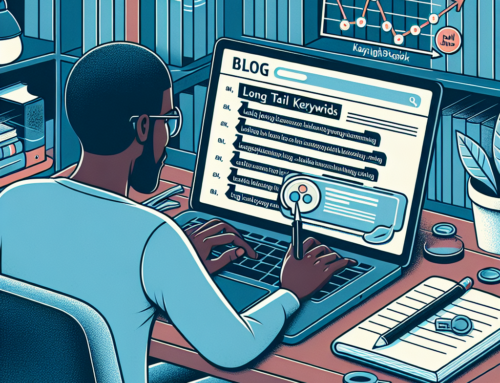
The Importance of Clear Communication in Team Building
Creating a high-performance team is essential for any organization to achieve success. A high-performing team is a group of individuals who work together towards a common goal, utilizing their skills and strengths to achieve outstanding results. However, building such a team is not an easy task. It requires a lot of effort, dedication, and effective strategies. One of the key strategies for creating a high-performance team is clear communication.
Clear communication is the foundation of any successful team. It is the process of exchanging information, ideas, and thoughts in a way that is easily understood by all team members. Without clear communication, a team can quickly fall apart, leading to misunderstandings, conflicts, and ultimately, failure. Therefore, it is crucial to establish clear communication from the very beginning of team building.
The first step towards clear communication is setting expectations. As a team leader, it is your responsibility to clearly define the team’s goals, roles, and responsibilities. This will help team members understand what is expected of them and how their contributions will contribute to the team’s success. When expectations are set, team members are more likely to work towards a common goal, and there is less room for confusion or misunderstandings.
Another important aspect of clear communication is active listening. It is not enough to just speak; one must also listen. Active listening involves paying attention to what others are saying, understanding their perspectives, and responding appropriately. When team members feel heard and understood, they are more likely to communicate openly and honestly, leading to better collaboration and problem-solving.
In addition to setting expectations and active listening, effective communication also involves being transparent and honest. Team members should feel comfortable expressing their thoughts and opinions without fear of judgment or repercussions. As a team leader, it is essential to create a safe and open environment where team members can communicate freely. This will foster trust and respect among team members, leading to better communication and a stronger team bond.
Moreover, it is crucial to establish clear channels of communication within the team. This can include regular team meetings, one-on-one check-ins, and the use of communication tools such as email, messaging apps, or project management software. Having a designated time and space for team communication can help ensure that everyone is on the same page and that important information is not missed.
Another effective strategy for clear communication is providing feedback. Feedback is essential for team members to understand their strengths and areas for improvement. As a team leader, it is important to provide both positive and constructive feedback regularly. This will not only help team members grow and develop but also improve team performance as a whole.
Lastly, it is crucial to address conflicts and issues that may arise within the team. Conflict is inevitable in any team, but how it is handled can make a significant difference. Encouraging open and honest communication can help resolve conflicts before they escalate. It is also important to address any issues promptly and find solutions together as a team.
In conclusion, clear communication is vital for creating a high-performance team. It sets the foundation for trust, respect, and collaboration among team members. As a team leader, it is your responsibility to establish clear communication from the beginning and continuously work towards maintaining it. By setting expectations, actively listening, being transparent, providing feedback, and addressing conflicts, you can create a team that communicates effectively and achieves outstanding results.
Effective Delegation: Empowering Team Members for Success
Creating a high-performance team is essential for any organization to achieve success. A high-performing team is a group of individuals who work together towards a common goal, utilizing their skills and strengths to achieve outstanding results. As a leader, it is your responsibility to ensure that your team is functioning at its best. One of the key strategies for creating a high-performance team is effective delegation.
Delegation is the process of assigning tasks and responsibilities to team members. It is a crucial aspect of leadership, as it not only helps in achieving goals but also empowers team members to take ownership and responsibility for their work. Effective delegation is about more than just assigning tasks; it involves empowering team members to make decisions, take risks, and contribute to the team’s success.
The first step in effective delegation is to understand your team members’ strengths and weaknesses. Every individual has unique skills and abilities, and as a leader, it is your responsibility to identify and utilize them effectively. By understanding your team members’ strengths, you can delegate tasks that align with their skills, which will not only increase their confidence but also improve the overall performance of the team.
Communication is another crucial aspect of effective delegation. It is essential to communicate clearly and effectively when delegating tasks to team members. This includes providing a clear understanding of the task, its importance, and the expected outcome. It is also important to set realistic deadlines and provide any necessary resources or support to ensure the task’s success. By communicating effectively, you can avoid any misunderstandings or confusion, which can hinder the team’s performance.
Delegation also involves trust. As a leader, it is important to trust your team members to complete the assigned tasks successfully. Trusting your team members not only shows confidence in their abilities but also motivates them to perform at their best. It is also important to provide feedback and recognition for a job well done. This not only boosts team morale but also encourages team members to take on more responsibilities in the future.
Another important aspect of effective delegation is to avoid micromanaging. Micromanaging can be detrimental to a team’s performance as it can create a sense of mistrust and hinder team members’ creativity and decision-making abilities. Instead, give your team members the freedom to complete tasks in their own way, while still providing support and guidance when needed. This will not only empower team members but also foster a sense of ownership and accountability.
Delegation also involves setting clear expectations. It is important to define the scope of work, expected outcomes, and any specific guidelines or requirements for the task. This will help team members understand their responsibilities and what is expected of them. It is also important to be open to questions and provide clarification when needed. By setting clear expectations, you can ensure that tasks are completed efficiently and effectively.
Lastly, it is important to review and evaluate the delegated tasks. As a leader, it is your responsibility to monitor the progress of the tasks and provide feedback to team members. This will not only help in identifying any issues or challenges but also provide an opportunity for continuous improvement. By reviewing and evaluating tasks, you can ensure that the team is on track to achieve its goals and make any necessary adjustments along the way.
In conclusion, effective delegation is a crucial strategy for creating a high-performance team. By understanding your team members’ strengths, communicating effectively, building trust, avoiding micromanaging, setting clear expectations, and reviewing tasks, you can empower your team members for success. As a leader, it is important to remember that effective delegation is not about giving up control, but rather about empowering and supporting your team to achieve outstanding results.
Building Trust and Collaboration within a Team
Creating a high-performance team is essential for any organization to achieve success. A high-performing team is a group of individuals who work together towards a common goal, utilizing their unique skills and strengths to achieve outstanding results. However, building such a team is not an easy task. It requires effort, dedication, and most importantly, trust and collaboration among team members.
Trust and collaboration are the foundation of a high-performance team. Without these two elements, a team will struggle to achieve its goals and may even fall apart. So, how can you build trust and collaboration within your team? Here are some strategies that can help you create a high-performance team.
First and foremost, communication is key. Effective communication is the cornerstone of trust and collaboration within a team. It is essential to establish open and honest communication channels among team members. This means encouraging team members to express their thoughts, ideas, and concerns freely. As a leader, it is your responsibility to create a safe and non-judgmental environment where team members feel comfortable sharing their opinions. This will not only foster trust but also promote collaboration as team members will feel valued and heard.
Another important strategy for building trust and collaboration within a team is to lead by example. As a leader, your actions speak louder than words. If you want your team members to trust and collaborate with each other, you must demonstrate these qualities yourself. Be transparent in your communication, show empathy towards team members, and be open to feedback. This will set the tone for the team and encourage others to follow suit.
Team building activities are also an effective way to build trust and collaboration within a team. These activities can range from simple icebreakers to more complex problem-solving tasks. The key is to create opportunities for team members to interact and get to know each other on a personal level. This will help break down barriers and build trust among team members. Moreover, team building activities also promote collaboration as team members learn to work together towards a common goal.
In addition to team building activities, it is crucial to establish clear roles and responsibilities within the team. When team members know what is expected of them, they are more likely to trust each other and collaborate effectively. As a leader, it is your responsibility to delegate tasks and ensure that each team member understands their role in achieving the team’s goals. This will not only promote trust and collaboration but also improve the team’s overall performance.
Another effective strategy for building trust and collaboration within a team is to celebrate successes together. When a team achieves a goal or completes a project, it is essential to recognize and celebrate their accomplishments. This not only boosts team morale but also strengthens the bond between team members. Celebrating successes together creates a sense of camaraderie and encourages team members to continue working together towards future goals.
Lastly, it is crucial to address conflicts within the team promptly. Conflicts are inevitable in any team, but how they are handled can make or break a team’s trust and collaboration. As a leader, it is essential to address conflicts in a timely and respectful manner. Encourage team members to communicate openly and find a resolution together. This will not only resolve the conflict but also strengthen trust and collaboration within the team.
In conclusion, building trust and collaboration within a team is crucial for creating a high-performance team. Effective communication, leading by example, team building activities, establishing clear roles and responsibilities, celebrating successes, and addressing conflicts are all essential strategies for building trust and collaboration within a team. As a leader, it is your responsibility to foster a positive and collaborative environment for your team to thrive and achieve outstanding results.
Utilizing Individual Strengths for a Stronger Team Dynamic
Creating a high-performance team is essential for any organization to achieve success. A high-performing team is one that is able to work together efficiently, effectively, and harmoniously towards a common goal. However, building such a team is not an easy task. It requires a lot of effort, dedication, and strategic planning. One of the key strategies for creating a high-performance team is utilizing individual strengths for a stronger team dynamic.
Every team is made up of individuals with unique strengths, skills, and personalities. As a leader, it is your responsibility to identify and utilize these strengths to create a stronger team dynamic. This means understanding each team member’s strengths and how they can contribute to the team’s overall success.
The first step in utilizing individual strengths is to get to know your team members on a personal level. Take the time to have one-on-one conversations with each team member to understand their strengths, weaknesses, and goals. This will not only help you build a stronger relationship with your team but also give you valuable insights into how to utilize their strengths effectively.
Once you have a good understanding of your team members’ strengths, it is important to assign tasks and responsibilities accordingly. This means delegating tasks to team members based on their strengths and skills. For example, if you have a team member who is great at problem-solving, assign them tasks that require critical thinking and decision-making. This will not only make the task easier for them but also ensure that it is completed efficiently and effectively.
Another important aspect of utilizing individual strengths is creating a diverse team. A diverse team brings together individuals with different backgrounds, experiences, and perspectives. This diversity can lead to more creative and innovative solutions as team members can learn from each other’s strengths and experiences. It also promotes a culture of inclusivity and respect within the team.
In addition to delegating tasks based on individual strengths, it is also important to provide opportunities for team members to develop and enhance their skills. This can be done through training, workshops, or job rotations. By investing in your team members’ development, you are not only helping them grow but also strengthening the team as a whole. As team members acquire new skills, they can take on new responsibilities and contribute even more to the team’s success.
Communication is another crucial aspect of utilizing individual strengths for a stronger team dynamic. As a leader, it is important to foster open and effective communication within the team. This means encouraging team members to share their ideas, opinions, and concerns. By doing so, you are creating a safe and supportive environment where team members can utilize their strengths without fear of judgment or criticism.
Furthermore, recognizing and acknowledging individual strengths is essential for creating a high-performance team. As a leader, it is important to celebrate and appreciate the contributions of each team member. This not only boosts team morale but also encourages team members to continue utilizing their strengths for the team’s success.
In conclusion, utilizing individual strengths is a crucial strategy for creating a high-performance team. It involves getting to know your team members, delegating tasks based on strengths, promoting diversity, providing opportunities for development, fostering effective communication, and recognizing individual contributions. By implementing these strategies, you can create a strong and cohesive team that is capable of achieving great success. Remember, a team is only as strong as its weakest link, so make sure to utilize each team member’s strengths for a stronger team dynamic.
Creating a Positive Team Culture: Strategies for Motivation and Engagement
Creating a high-performance team is essential for any organization to achieve success. A high-performing team is one that is motivated, engaged, and works together seamlessly towards a common goal. However, building such a team is not an easy task. It requires effort, dedication, and the implementation of effective strategies. One crucial aspect of creating a high-performance team is establishing a positive team culture. In this article, we will discuss some strategies for creating a positive team culture that promotes motivation and engagement.
First and foremost, it is essential to understand that a positive team culture starts with the leader. As a leader, it is your responsibility to set the tone for the team and create an environment that fosters positivity and collaboration. This can be achieved by being approachable, open to feedback, and treating team members with respect. When team members feel valued and supported by their leader, they are more likely to be motivated and engaged in their work.
Another crucial strategy for creating a positive team culture is to encourage open communication. Communication is the key to building trust and fostering a sense of belonging within the team. As a leader, it is essential to establish an open-door policy where team members feel comfortable sharing their thoughts, ideas, and concerns. This not only promotes transparency but also allows for effective problem-solving and decision-making within the team.
In addition to open communication, it is also essential to promote a culture of collaboration. A high-performing team is one that works together towards a common goal, and collaboration is the key to achieving this. As a leader, you can encourage collaboration by assigning team projects, promoting cross-functional teams, and recognizing and rewarding teamwork. When team members feel like they are part of a team and their contributions are valued, they are more likely to be motivated and engaged in their work.
Furthermore, it is crucial to provide opportunities for growth and development within the team. A positive team culture is one that promotes continuous learning and development. As a leader, you can offer training and development programs, mentorship opportunities, and encourage team members to take on new challenges. When team members feel like they are growing and developing within the team, they are more likely to be motivated and engaged in their work.
Another effective strategy for creating a positive team culture is to celebrate successes and milestones. It is essential to recognize and appreciate the hard work and achievements of team members. This not only boosts morale but also promotes a sense of pride and ownership within the team. As a leader, you can celebrate successes by organizing team outings, acknowledging individual achievements, and publicly recognizing the efforts of the team.
Lastly, it is crucial to promote a healthy work-life balance within the team. A positive team culture is one that values the well-being of its members. As a leader, it is essential to encourage team members to take breaks, use their vacation time, and maintain a healthy work-life balance. This not only promotes a positive team culture but also leads to increased productivity and job satisfaction.
In conclusion, creating a positive team culture is essential for promoting motivation and engagement within a team. As a leader, it is your responsibility to set the tone and create an environment that fosters positivity, collaboration, and growth. By implementing the strategies discussed in this article, you can create a high-performance team that works together towards a common goal and achieves success. Remember, a positive team culture starts with you as a leader, so lead by example and watch your team thrive.
We have lots of exciting coming events in Entrepreneurship, Investing and Personal Development. You can find them all here:
www.swedishwealthinstitute.se/events




